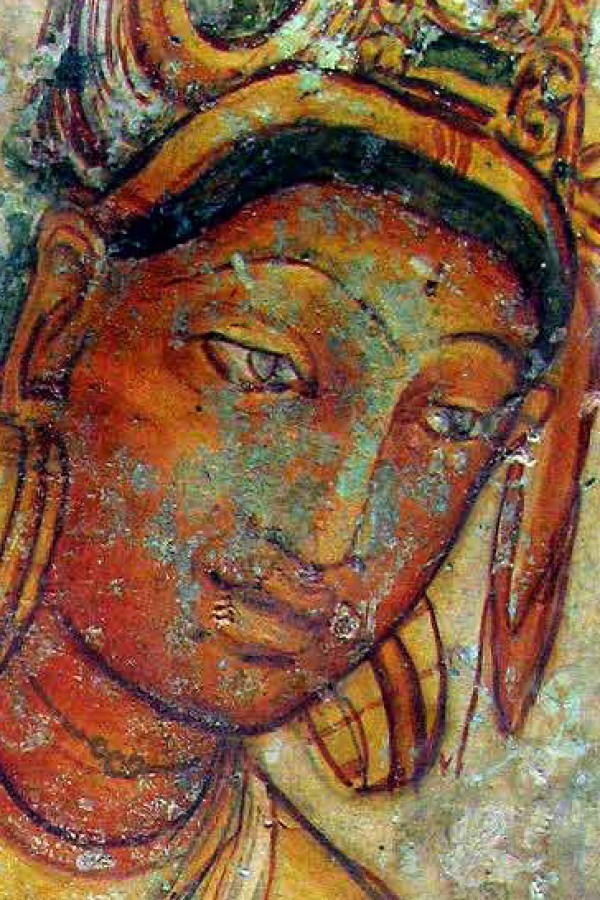What emotions is this person feeling?

Sigiriya Maiden,
c. 479–497
-
Bright emotions
-
Not at all Extremely
-
-
Quiet emotions
-
Not at all Extremely
-
-
Heavy emotions
-
Not at all Extremely
-
-
Sombre emotions
-
Not at all Extremely
-
Compare yourself to others
Choose different variables below, and see the patterns of response reflected in the circle of emotion above. Your responses are the coloured wedges. Others' responses are averaged in the spider graph of lines and dots.

Date: c. 479–497
Creator of the image: Unknown Date of the image creation: c. 479–497 Medium of the image: Pigment on rock Person depicted: Unknown sacred or courtly figure This fresco image, high in the ancient rock-city of Sigiriya, the Lion’s Rock, Sri Lanka, depicts one of a group of figures now described as the Cloud Maidens. There is considerable conjecture as to the meaning of the figures. Different interpretations can be found in archaeological texts, historical treatises, poetry and traveller’s tales, describing them variously as Hindu Goddesses and women in the court of King Kassyapa I. The photograph of the image used here is taken from a traveller’s blog post, Sue Llewellyn writing in 2012 called ‘The Cloud Maidens of Sigiriya, Sri Lanka’. She describes the context for image: ‘Sigiriya (Lion’s rock) is a large stone ancient rock fortress and palace ruin in the central Matale District of Sri Lanka. It is surrounded by the remains of an extensive network of gardens, reservoirs, and other structures and renowned for its ancient frescos. It is one of the eight World Heritage Sites of Sri Lanka. It is also declared by UNESCO as the Eighth Wonder of the World.’ ‘Sigiriya may have been inhabited through prehistoric times. It was used as a rock-shelter mountain monastery from about the fifth century BC, with caves prepared and donated by devotees of the Buddhist Sangha. According to the chronicles the entire complex was built by King Kashaypa (AD 477–495), and after the king’s death, it was used as a Buddhist monastery until fourteenth century.’ ‘Halfway up the rock, within an inaccessible rocky shelter in the vertical wall of the western face are rock paintings which have brought universal acclaim to the site of Sigiriya — “The Maidens of the Clouds”, 21 non-identified female figures, comparable to the most beautiful creations of Ajanta.’